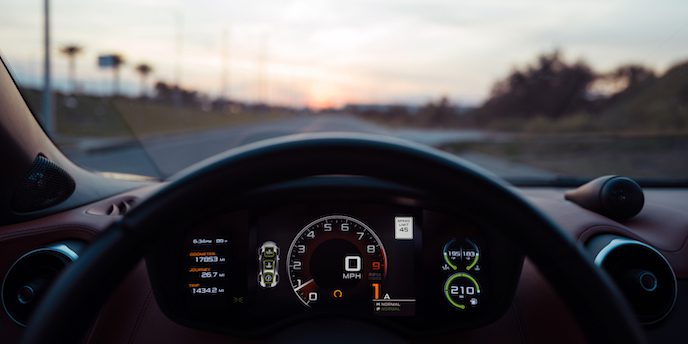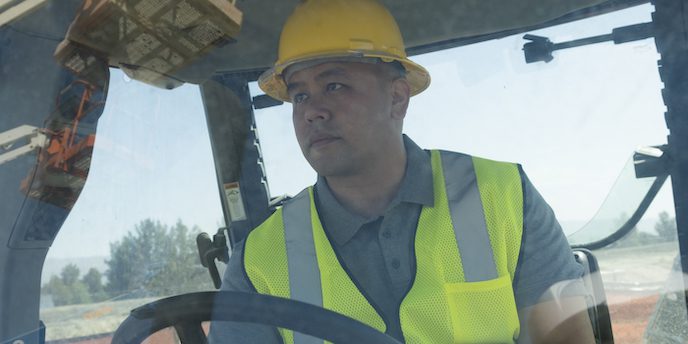

The automotive industry gets a bad rap. Yes, we know there are far too many vehicles on the planet and we know that the historical contribution of cars to global pollution is significant. But I’m not here to discuss the legacy. I want to look at the here and now and what the industry is doing to change things.
If you’re old enough to have driven a car before the year 1990, you’ll probably remember your dashboard included your km/hr (mph in the US), fuel tank and oil levels, and your total mileage. And that was probably that.
If we could conduct some kind of Back to the Future experiment and transport a 1970s driver to 2023, it’s perhaps not too far an exaggeration to suggest that the wealth of data that driver would see now might be every bit as jaw-dropping as the internet, the mobile phone and the flat screen TV.

As well as the speedometer, the driver would see a tachometer, odometer, engine coolant and fuel gauge, turn indicators, gearshift indicators, seatbelt warning lights, parking-brake warning lights and engine malfunction lights. And that’s just for starters.
Many of these are aimed at safety. Some like GPS tracking enable a more convenient journey with in-built traffic warnings. And more recently, there has been a spate of emissions reporting data that has given the driver clear and precise numbers on what the car is emitting at that moment, over the course of the journey and through its lifecycle.
And it’s here where the automotive industry has really excelled. When a driver leaves the forecourt, the industry is effectively telling them that they are now responsible for what goes on in that car. Be it the safety of their kids (rear seat belts did not become mandatory in the UK until 1991), the speed at which they travel, or their emissions reporting they are given complete ownership and are able to adjust their actions accordingly.
“It’s here where the automotive industry has really excelled. When a driver leaves the forecourt, the industry is effectively telling them that they are now responsible for what goes on in that car.”
Is there evidence to suggest it works? A ResearchGate report on driver behavior, concludes that eco-driving technology fosters eco-driving skills and “after training or using in-vehicle devices, immediate and significant reductions in fuel consumption and CO2 emissions have been observed with slightly increased travel time”. The report cites better choices on acceleration and deceleration, driving speed and its impact on fuel economy, route choice and idling.
Throw electrification and the car-sharing phenomenon into the mix and the argument for a transformational shift in driver behavior becomes even more compelling. The IEA estimated there were in 2021, 16.5 million EVs globally, triple the 2018 figure while the global value of the car-sharing market was USD 7 billion in 2022 and is projected to hit USD 15.4 billion by 2028, according to Businesswire.
This is exactly the kind of breakthrough that we are now seeking in construction. In order to get the buy-in that has evolved steadily among car drivers, we’re now trying to give ownership to the machine operators in exactly the same way, not necessarily by giving them the same level of data as that’s not yet feasible, but by building that culture of ownership that is more evident among drivers.
This is not easy. The mentality that the machine either belongs to the company (“not my problem guv’”), is the responsibility of the rental company or quite simply is irrelevant as far as the immediate task and profits are concerned, is what we have to overcome.
“In order to get the buy-in that has evolved steadily among car drivers, we’re now trying to give ownership to the machine operators in exactly the same way.”
Because construction is incredibly complex and there are a ton of variables, it can become easy to shrug your shoulders and just accept we can never attain what the car industry has managed to do. But we see what they have achieved from that pre-1990s starting point and there is no reason that construction cannot take incremental steps towards similar benchmarking that goes beyond the current standards in telemetry on idling and fuel usage data to something much more insightful.
Striving towards emissions reporting data is in the end much better than doing nothing. We are at a point where we need to think a little further ahead and become more concrete and base it more on data. That’s really what the key mission here is.
There is a narrative with cars that runs through — no pun intended — the journey. You buy, you drive, you maintain and prolong, perhaps sell on down the line or maybe even scrap the vehicle but all through that lifecycle, you are constantly being reminded and educated via your dashboard on your choices and what might work best for that car in an eco-friendly way. It’s a really strong image, supported by strong language, creating a powerful narrative for industry with clear options at every stage of the car’s lifecycle. If anything, it’s a partnership.
“We as an industry are doing the right thing by creating an immediate awareness of the CO2 footprint of our machines and, via connectivity, building the bigger picture.”
We can do that for machines too. How to keep them maintained, how to schedule repairs, when and where to redeploy your machinery through site-specifics data, how to cut out idling and help eliminate downtime and, if you’re a rental company, how to cultivate a culture among your customers that enables them to use the data correctly so that they buy in and their machine operators buy in to the process.
With legislation increasingly weighed in favor of companies that can put together a compelling case on how they manage their emissions, the bottom-line considerations are also moving in tandem with a more eco-friendly strategy that could help win bigger, better contracts. That is especially so at national or local government-level projects.
Once we have proper reporting and once we move beyond guestimating, we’ll be that bit closer to realizing this potential. I think we as an industry are doing the right thing by creating an immediate awareness of the CO2 footprint of our machines and, via connectivity, building the bigger picture.

Beyond that, we can then begin to emulate the car industry by making sure we have credible, reliable data supporting the whole lifecycle process of the machine at the design stage, the usage stage and how we can maybe increase the length of service of the machine based on good numbers.
The challenge is daunting as we’ve said repeatedly. But that is not a reason to give up. It’s a reason to plow on and make sure we’re giving our consumers better, stronger choices at the renting, buying and building phases of a machine’s life. If we do that, then I think we’ll have a chance of getting somewhere in the next 10 years.
Does 10 years sound long? If you feel that way, I’ll refer you back to our 1970s driver and what our brave new world would now reveal to them. The car industry was the pioneer here. And we can piggyback on some of their findings. It could make the mid-2030s very exciting.
To receive three insightful reads on data, strategy and tech from people across the construction industry in your inbox once a month, sign up to the Eliminate Downtime newsletter.

